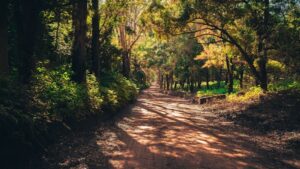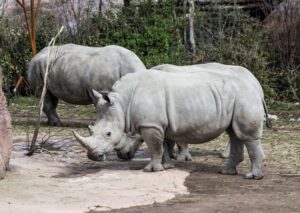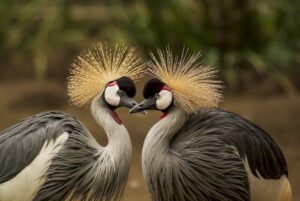The Masai Mara National Reserve, often simply referred to as the Mara, is one of the most renowned and cherished wildlife conservation areas in Africa. Situated in southwestern Kenya, it forms a contiguous ecosystem with Tanzania’s Serengeti National Park. This expansive reserve, named in honor of the Maasai people who inhabit the region and the Mara River that traverses it, stands out for its unparalleled biodiversity, cultural richness, and extraordinary natural phenomena. Let’s delve deeper into what makes the Masai Mara National Reserve truly unique.
Biodiversity and Wildlife Abundance of Masai Mara
The Masai Mara National Reserve is famed for its incredible variety of wildlife, both in species and sheer numbers. This diversity is largely attributed to its location within the East African Rift Valley and its blend of savannah, riverine forests, and acacia woodlands. Here, the ecosystem supports a vast array of herbivores, predators, and bird species.
The Big Five and Beyond:
The reserve is home to the “Big Five” lions, leopards, elephants, buffalo, and rhinos. These iconic animals, once the prime targets for big-game hunters, are now among the most sought-after sightings for wildlife enthusiasts and photographers. The Mara’s dense lion population is particularly noteworthy, offering frequent sightings and interactions with these majestic predators.
The Great Migration at Masai Mara:
Perhaps the most extraordinary feature of the Mara is the annual Great Migration, often hailed as one of the most spectacular natural events on the planet. Over 1.5 million wildebeest, along with hundreds of thousands of zebras and gazelles, migrate from the Serengeti to the Masai Mara in search of greener pastures. This journey is fraught with peril, from predatory attacks to the treacherous crossing of the Mara River, where crocodiles lie in wait. The Great Migration not only underscores the resilience of these animals but also highlights the interconnectedness of the Mara and Serengeti ecosystems.
Birdlife at Masai Mara:
The Mara is a birdwatcher’s paradise, boasting over 470 bird species. From the vibrant lilac-breasted roller to the imposing ostrich, the diversity of avian life adds another layer to the region’s ecological richness. The reserve’s varied habitats support both resident and migratory bird populations, making it a year-round destination for ornithologists.
Cultural Heritage of Masai Mara
The Masai Mara is not just a sanctuary for wildlife but also a home to the Maasai people, who have lived in harmony with the land and its animals for centuries. The Maasai culture, known for its distinct customs, attire, and social structure, is an integral part of the Mara’s identity.
Maasai Traditions and Lifestyle:
The Maasai are semi-nomadic pastoralists, traditionally dependent on cattle for their livelihood. Cattle are central to their social, economic, and spiritual lives, representing wealth and status. The Maasai practice age-old traditions such as intricate beadwork, vibrant shuka cloths, and elaborate ceremonies that mark various life stages, from warrior initiation to marriage.
Conservation and Coexistence:
The Maasai’s relationship with the environment is symbiotic. Historically, they have practiced sustainable grazing, which helps maintain the grasslands that support the region’s wildlife. In recent years, community-based conservation initiatives have gained traction, where local Maasai communities are actively involved in wildlife conservation efforts and tourism management. This partnership ensures that both the cultural heritage and natural beauty of the Mara are preserved for future generations.
Scenic Beauty and Geography of Masai Mara
The Masai Mara’s landscapes are as diverse as its wildlife. The reserve spans approximately 1,510 square kilometers, characterized by rolling savannahs, lush riverbanks, and dramatic escarpments.

Scenic Vistas:
The open plains of the Mara, dotted with acacia trees, provide breathtaking vistas that seem to stretch endlessly. The Mara River, with its meandering curves and rich vegetation, offers a lifeline to many species and creates picturesque settings, especially during sunrise and sunset. The Oloololo Escarpment on the western boundary of the reserve provides stunning viewpoints and adds a dramatic backdrop to the undulating plains.
Climate and Seasons:
The Mara experiences a relatively moderate climate, with two main rainy seasons (April to June and October to November). These rains rejuvenate the grasslands, ensuring ample food supply for herbivores. The dry seasons (July to October and December to March) are ideal for game viewing, as animals congregate around water sources and the vegetation is less dense.
Unique Experiences and Activities of Masai Mara
Visitors to the Masai Mara are treated to a range of unique experiences that enhance their appreciation of this extraordinary landscape.
Hot Air Balloon Safaris:
One of the most iconic ways to experience the Mara is from above, in a hot air balloon. These safaris provide a bird’s-eye view of the plains, offering a unique perspective on the wildlife and landscapes below. The early morning flights often conclude with a champagne breakfast in the bush, adding a touch of luxury to the adventure.
Guided Game Drives and Walks:
Traditional game drives, led by knowledgeable guides, are the primary way to explore the Mara. These drives, conducted in open 4×4 vehicles, allow close encounters with wildlife and provide insights into animal behaviour and ecology. For a more intimate experience, guided walking safaris offer a chance to explore the Mara on foot, learning about the smaller, often overlooked aspects of the ecosystem.
Cultural Visits of Masai Mara:
Engaging with the Maasai people through village visits and cultural tours provides an enriching dimension to a Mara safari. Visitors can learn about Maasai traditions, participate in dances, and understand the challenges and triumphs of living in harmony with wildlife.
The Future of the Masai Mara
The future of the Masai Mara hinges on a delicate balance between conservation and development. Climate change, habitat fragmentation, and socio-economic pressures pose significant challenges, but ongoing efforts by various stakeholders offer hope.
Community Involvement:
Empowering local communities is vital for the long-term conservation of the Mara. By involving the Maasai in decision-making processes and ensuring they benefit from tourism and conservation, a sustainable coexistence can be achieved. Education and awareness programs further bolster these efforts, fostering a generation that values and protects their natural heritage.
Research and Monitoring of Masai Mara:
Continuous research and monitoring are crucial for understanding the dynamics of the Mara ecosystem. Studies on wildlife populations, migration patterns, and habitat health inform management strategies and conservation policies. Collaborative efforts with academic institutions and international organizations enhance the scientific foundation for conservation actions.
Global Support and Advocacy of Masai Mara:
The Masai Mara’s significance transcends national borders. Global support through funding, advocacy, and responsible tourism is essential. International organizations, philanthropists, and conscientious travelers all play a role in ensuring the Mara’s preservation.
Conclusion
The Masai Mara is a unique tapestry of wildlife, culture, and landscapes. Its fame is well-deserved, not only for the dramatic spectacles it offers, such as the Great Migration, but also for the rich cultural heritage of the Maasai people and the breathtaking beauty of its scenery. While it faces numerous challenges, the collective efforts of local communities, conservationists, and the global community provide a beacon of hope. The Masai Mara stands as a testament to the splendor of nature and the resilience of those who strive to protect it, ensuring that its wonders endure for generations to come. Visit Masai Mara National Park Reserve for the greater experience of east Africa





